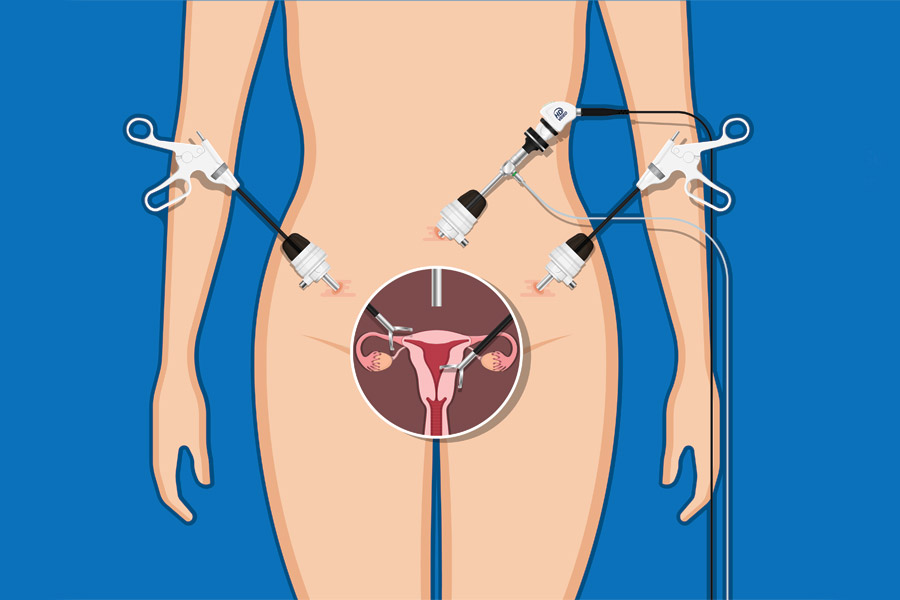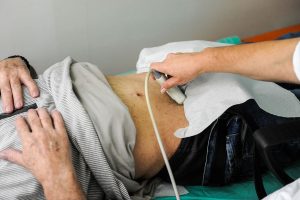The Office on Women’s Health states that approximately 11% (6.5 million) of American women suffer from endometriosis. This medical condition brings a lot of discomfort and while a lot of symptoms can make your doctor assume you have endometriosis, the only way to diagnose it is by performing laparoscopic surgery.
What Is Endometriosis? Common Symptoms
Endometriosis refers to the medical condition during which the tissues that are commonly growing inside the uterus start overgrowing and spreading outside the organ. Endometrial tissue can grow into the fallopian, cervix, ovaries, and other internal organs such as the bowel or bladder.
The disease brings a lot of discomforts and often shows through the following symptoms:
- heavy periods;
- severe menstrual cramps;
- chronic abdominal pain;
- pain and discomfort during intercourse;
- trouble getting pregnant.
The precise cause of endometriosis is not clear. Usually, its treatment starts with conservative methods, like hormone therapy. But if there’s no response, your doctor will probably recommend a laparoscopy.
Indications for Surgery. Do You Really Need It?
Whether you need surgery for your endometriosis should be decided by your healthcare provider. The doctor’s decision will be based on the following things:
- the presence or absence of chronic pelvic pain;
- pain severity rate;
- respond to medicinal treatment;
- endometriosis lesions that need to be removed;
- ability to get pregnant.
Explaining Laparoscopy

Laparoscopy is a type of surgical treatment used to diagnose and treat endometriosis. During the procedure, your surgeon or gynecologist will be able to evaluate the severity of your condition and take samples that will allow them to prove the diagnosis. Also, a doctor will be able to remove the affected tissues, implants, and scar tissue adhesions that prevent your genital system from healthy functioning.
Unlike laparotomy, which is major surgery, laparoscopy is minimally invasive. For this reason, laparoscopy is the most common surgical treatment option for women with endometriosis.
The Flow of Laparoscopy for Endometriosis
The surgery starts with you getting general anesthesia, so you’ll be sleeping throughout the procedure. The following step is making small incisions, usually two, on your abdomen. Then, the doctor will fill your abdominal cavity with carbon dioxide to have a better view of the internal organs and for easier detection of the areas affected by endometriosis. After that, a doctor will insert a laparoscope into your abdomen. A laparoscope looks like a tube with a camera attached to it. If during the surgery your doctor decides to remove endometriosis lesions, they will use a special tool for this.
Once the surgical sight looks good and the doctor sees no areas affected by endometrium overgrowth, they close the incisions with stitches, and the surgery finishes. Depending on the severity of your condition and the size of the affected area, the procedure may last from 30 minutes to an hour.
The majority of patients undergoing laparoscopy for endometriosis are released from the hospital on the same day. In some cases, patients who had complications during the surgery may need to stay in the hospital overnight to ensure they feel fine.
Staying Safe after Surgery
Despite laparoscopy being minimum-invasive surgery, your doctor will still ask you to reduce your usual physical activeness and refuse from doing certain things for some time, for instance
- lifting heavy things;
- taking a hot bath;
- having sex;
- swimming and bathing.
All these precautions aim to reduce the risks of internal bleeding and infection, so you’d better follow those recommendations.
Potential Post-Surgery Issues. What to Be Ready for?
Surgical intervention is always a risk, especially if general anesthesia is used. The possible difficulties you may face in the post-operative period include but are not limited to
- nausea and vomiting caused by anesthesia;
- slight pain in the abdomen;
- mild bleeding from the vagina;
- general tiredness for several days after surgery;
- bloating.
While the rate of complications after laparoscopic operations is much lower compared to open surgeries, they still exist. Your doctor will warn you about each of them before you make a decision. Here’s what you are likely to hear at the doctor’s office:
- the risk of internal bleeding;
- the formation of hernia at the incision sight due to poorly healing tissues;
- infection;
- the risk of damaging other internal organs during the surgery.
Although you can’t spend several days in the hospital after being operated on, you should seek medical attention if you develop a fever, severe pain, or notice redness and swelling a the incision sights. All these may signal infection, so you’ll have to act fast.
Is there a Risk of Relapse?
Unfortunately, having a laparoscopy for endometriosis is not a guarantee of you curing the disease. The risk of relapse remains quite high. Some scientific research claims that the risk of disease recurrence within the first 30 months after surgery is low. However, it grows dramatically once the patient reaches the point of five years after surgery.
On average, 20 to 30 percent of patients will have to undergo another surgery for endometriosis. The risk factors that increase your chances of getting on this statistic include:
- residual lesions from the previous surgery;
- retrograde bleeding in the post-surgical period;
- younger age;
- the severity of the disease before surgery;
- a lack of medicinal treatment in the postoperative period.
The chances of endometriosis recurrence remain the same even after the second surgery.
Bottom Line
Laparoscopy for endometriosis is an effective diagnostic and treatment method. While it has its drawbacks, it is much safer for your body than open surgery. Besides, the efficacy of both types of surgery is approximately the same.







